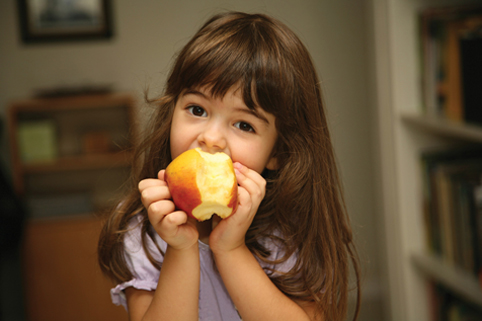Welcome to Blue Book!
Are you ready to join the thousands of companies who rely on Blue Book to drive smarter decisions? View our plans and get started today!
Still have questions? We’d love to show you what Blue Book can do for you. Drop us a line– we’ve been waiting for you.

The North American apple industry is in an enviable position of innovation and growth, driving the exploration of new varieties. We take a look at what’s new and adding luster to this enduringly popular pome fruit.
Sizing Up the Competition
Although apples are a perennially popular snack for Americans, the ease and convenience of fresh-cut products, such as sliced apples, has increased consumption.
Fortune magazine reported in 2014 that fruit had become the second most consumed food behind sandwiches, and apples represented the second highest dollar volume fruit at $2.4 billion in 2013, not far behind berries at $3.0 billion and ahead of bananas at just under $2.2 billion.
Pairing apples with dips or offering them as part of fast food value meals has also helped increase sales. In grocery stores, value-added apple products have also surged, rising 72 percent over the last five years.
Apple growers and shippers also report that new specialty varieties such as Jazz, Honeycrisp, Envy, and Ambrosia have expanded the category and intrigued consumers. Nielsen data showed both Ambrosia and Honeycrisp as category leaders for many retailers over the summer, while data from FreshLook Marketing Group, LLC, which tracks perishables sales in the grocery segment, declared that Envy apples reigned supreme in the first half of the year with supermarkets.
Strong variety recognition and consumer response was also behind the New York Apple Growers’ name change to ‘Crunch Time Apple Growers’ in early August. The group, which represents 145 grower-shippers within the state, was hopeful the more descriptive moniker would help distinguish them from other similarly named organizations, and promote the newest additions to their product lineup: SnapDragon and RubyFrost apples, from Cornell University’s breeding program.
But could all these new apple varieties be crowding the market and cannibalizing sales? Well, yes and no. “Our competition is everything else in the produce section of a grocery store,” comments Diane Smith, executive director of the Michigan Apple Committee. The solution, she explains, is “to set ourselves apart by highlighting the unique flavor profile of Michigan-grown apples.”
Julia Stewart, spokesperson for the New York Apple Association, believes New York’s competition comes from a few aisles away. “Our most serious competition is from the snack food aisle. And not without contradiction, consumers are increasingly demanding more local, minimally processed foods.”
Washington growers and shippers view other regions as a threat to their sales. Mac Riggan, marketing director at Chelan Fresh Marketing in Chelan, WA says, “Washington grows Galas, Honeycrisp, and SweeTangos, but so does New York.” Riggan contends East Coast rivals have an advantage over his state’s producers, as “their transportation costs are lower for the Midwest and Mid-Atlantic.”




